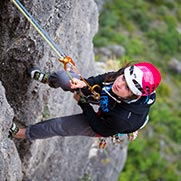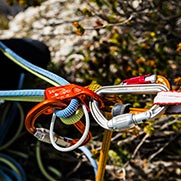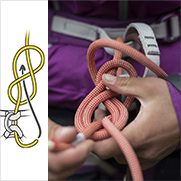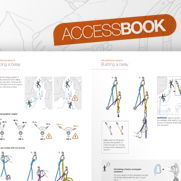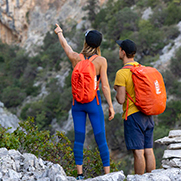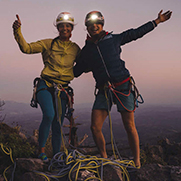Setting up a rappel during a ski descent
On a ski descent, a non-skiable section may require rappelling. It is often necessary to improvise an anchor using natural features.
Warnings
- Carefully read the Instructions for Use used in this technical advice before consulting the advice itself. You must have already read and understood the information in the Instructions for Use to be able to understand this supplementary information.
- Mastering these techniques requires specific training. Work with a professional to confirm your ability to perform these techniques safely and independently before attempting them unsupervised.
- We provide examples of techniques related to your activity. There may be others that we do not describe here.
In this video, Vivian Bruchez and Jonathan "Doud’s" Charlet, two mountain guides, demonstrate their method. Techniques can vary depending on the situation: accessing the anchor on foot or on skis, vertical or sloping rappel, arrival at a snow slope or rock anchor... It's essential to recognize when to transition from a skiing phase, by definition solo and unroped, to a roped phase, where normal mountaineering precautions apply: e.g. checking anchor quality, staying attached to the anchor during rope maneuvers, using a rappel backup...
Review of the knots used in this video:
Installing a cord sling on a rock horn: double fisherman's knot.
In the video, the skiers decided against tying a knot in the end of the rope. However, this is a basic precaution for many rappel situations, to help avoid rappelling off the end of the rope. But like all precautions, its value must be weighed in context: in this case, a knot at the end of the rope would increase the risk of getting the rope stuck in the blocks and cracks lining the couloir, exposing one of the skiers to a greater risk in order to go free the rope. The skiers therefore chose the technique that allowed them to best manage the two risks.
Rappelling with an Autoblock backup
Tying a Munter hitch
Tying an Autoblock


